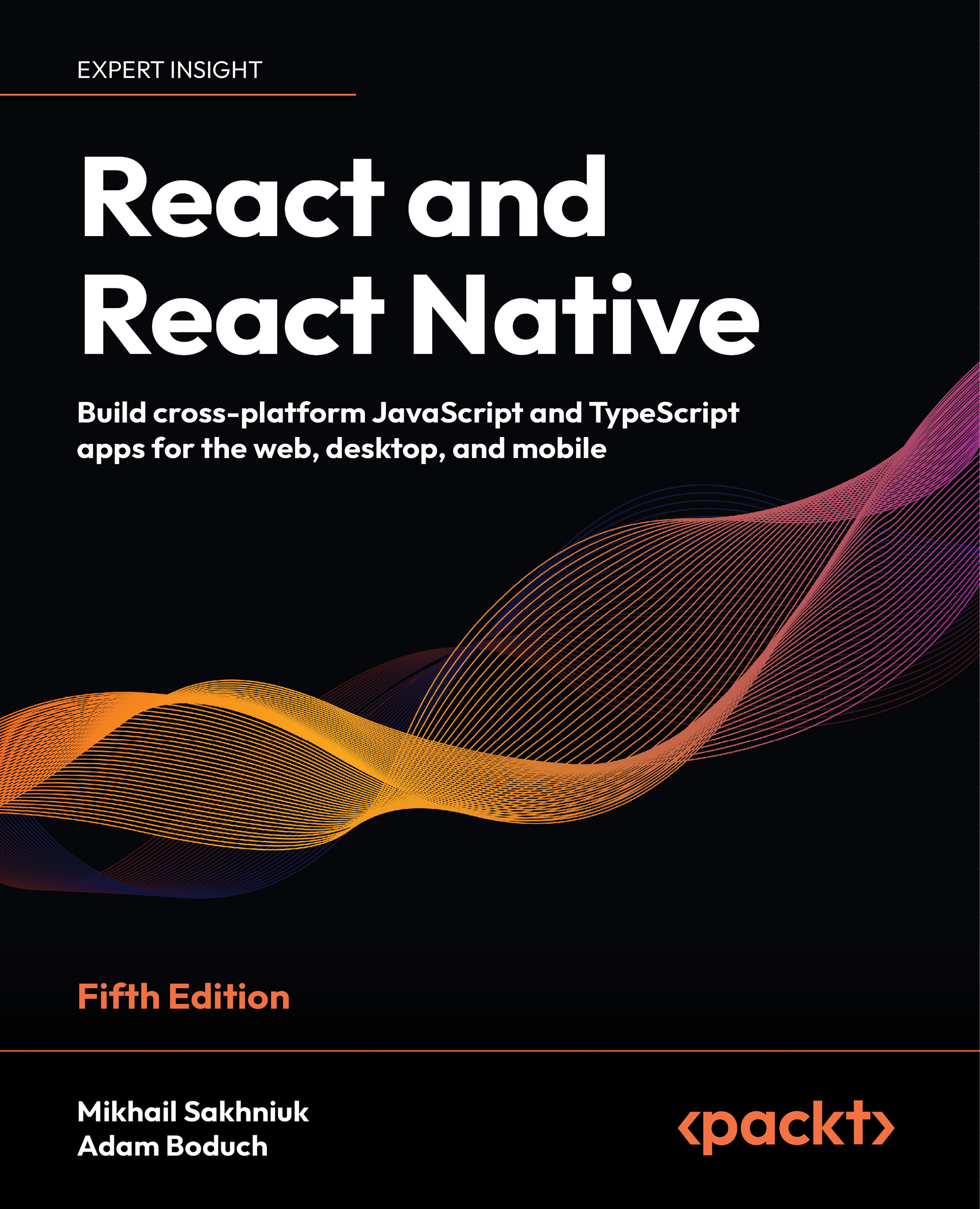In this section, you will learn how to create a RESTful web service. The concepts explained earlier in this chapter will be used.
The following are some of the key aspects of creating a RESTful web service. Let's take the example of retrieving the doctors' list based on the specialties, location, and so on.
- Create a controller representing the RESTful endpoint: In the following code, note the usage of the @RestController annotation, which is used to represent the annotation @Controller and @ResponseBody. The controller has a method, searchDoctor, for handling the request represented using the URL such as /doctors?location=xxx&speciality=yyy. Note the @RequestMapping annotation and its attributes, especially, "produces", which signifies the fact that the output sent to the user will be in the JSON format.
@RestController
public class DoctorSearchController {
@Autowired
DoctorService docService;
@RequestMapping(value="/doctors", method=RequestMethod.GET,
produces="application/json")
public DoctorList searchDoctor(
@RequestParam(value="location", required=false) String location,
@RequestParam(value="speciality", required=false) String speciality)
{
DoctorList docList = docService.find(location, speciality);
return docList;
}
}
The following is how the DoctorService implementation may look like:
@Service
public class DoctorServiceImpl implements DoctorService {
@Autowired
private DoctorDAO doctorDAO;
@Override
public List<Doctor> findByLocationAndSpeciality(String location, String
speciality) {
return doctorDAO.findByLocationAndSpeciality(location, specialityCode);
}
}
The following is how the DoctorDAO implementation may look like:
@Repository
@Transactional
public class DoctorDAOImpl implements DoctorDAO {
private SessionFactory sessionFactory;
@Autowired
public DoctorDAOImpl(SessionFactory sessionFactory) {
this.sessionFactory = sessionFactory;
}
@Override
public List<Doctor> findByLocationAndSpeciality(String location, String speciality) {
Session session = this.sessionFactory.getCurrentSession();
TypedQuery<Doctor> query = session.getNamedQuery("findByLocationAndSpeciality");
query.setParameter("location", location);
query.setParameter("speciality", speciality);
List<Doctor> doctors = query.getResultList();
return doctors;
}
}
- Create a RESTful API: For retrieving the list of doctors based on location and speciality, the URL could look like http://localhost:8080/doctors?location=xxx&speciality=yyy.
- Identify the method of processing incoming requests data: @RequestParam will be used to process the incoming requests data as mentioned in the preceding URL. In the previous code, note how @RequestParam is used for processing the value of both the location and the specialty parameter. The following code represents the same:
public DoctorList searchDoctor(
@RequestParam(value="location", required=false)
String location,
@RequestParam(value="specialty", required=false)
String speciality) {
// Code goes here
}
- Create a class representing ResponseBody: The return value is the DoctorList object, which consists of a list of Doctors. The following code represents the DoctorList object which is a list of the Doctor object:
// The class representing the list of Doctor; Returned as a response
public class DoctorList {
private List<Doctor> doctors;
public DoctorInfo(List<Doctor> doctors) {
this.setDoctors(doctors);
}
public List<Doctor> getDoctors() {
return doctors;
}
public void setDoctors(List<Doctor> doctors) {
this.doctors = doctors;
}
}
The following represents the Doctor class which is returned as part of the response object:
public class Doctor {
private String id;
private String firstName;
private String lastName;
private String specialityCode;
public String getId() {
return id;
}
public void setId(String id) {
this.id = id;
}
public String getFirstName() {
return firstName;
}
public void setFirstName(String firstName) {
this.firstName = firstName;
}
public String getLastName() {
return lastName;
}
public void setLastName(String lastName) {
this.lastName = lastName;
}
public String getSpecialityCode() {
return specialityCode;
}
public void setSpecialityCode(String specialityCode) {
this.specialityCode = specialityCode;
}
}
- Client response: The client receives the response body in the JSON format. The following is a sample response which is returned by the execution of the preceding code:
[{
"id": "doc1",
"firstName": "Calvin",
"lastName": "Hobbes",
"specialityCode": "pediatrics"
},
{
"id": "doc2",
"firstName": "Susan",
"lastName": "Storm",
"specialityCode": "cardiology"
}]
 United States
United States
 Great Britain
Great Britain
 India
India
 Germany
Germany
 France
France
 Canada
Canada
 Russia
Russia
 Spain
Spain
 Brazil
Brazil
 Australia
Australia
 Singapore
Singapore
 Canary Islands
Canary Islands
 Hungary
Hungary
 Ukraine
Ukraine
 Luxembourg
Luxembourg
 Estonia
Estonia
 Lithuania
Lithuania
 South Korea
South Korea
 Turkey
Turkey
 Switzerland
Switzerland
 Colombia
Colombia
 Taiwan
Taiwan
 Chile
Chile
 Norway
Norway
 Ecuador
Ecuador
 Indonesia
Indonesia
 New Zealand
New Zealand
 Cyprus
Cyprus
 Denmark
Denmark
 Finland
Finland
 Poland
Poland
 Malta
Malta
 Czechia
Czechia
 Austria
Austria
 Sweden
Sweden
 Italy
Italy
 Egypt
Egypt
 Belgium
Belgium
 Portugal
Portugal
 Slovenia
Slovenia
 Ireland
Ireland
 Romania
Romania
 Greece
Greece
 Argentina
Argentina
 Netherlands
Netherlands
 Bulgaria
Bulgaria
 Latvia
Latvia
 South Africa
South Africa
 Malaysia
Malaysia
 Japan
Japan
 Slovakia
Slovakia
 Philippines
Philippines
 Mexico
Mexico
 Thailand
Thailand















